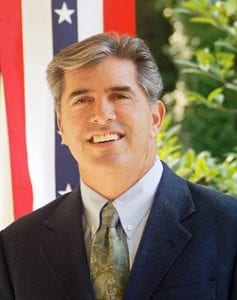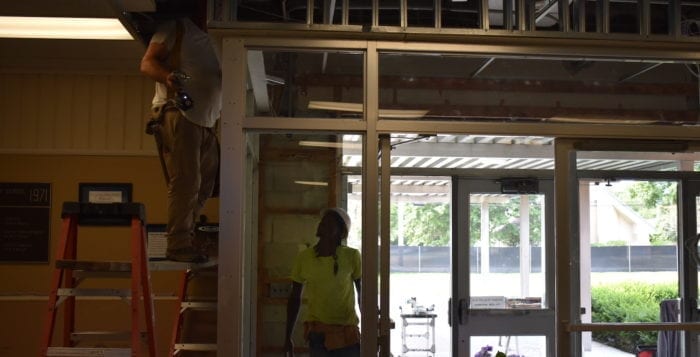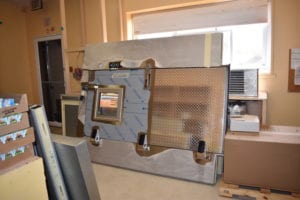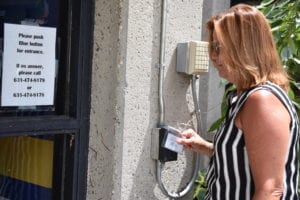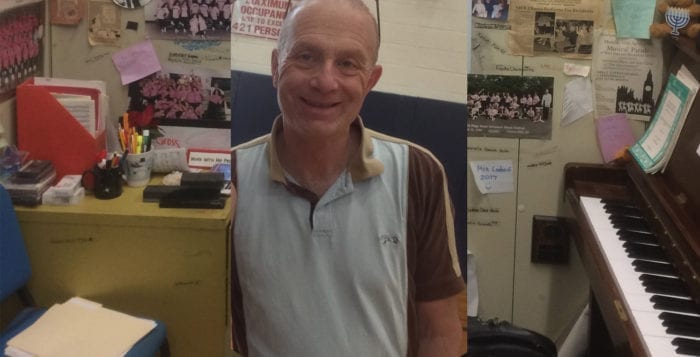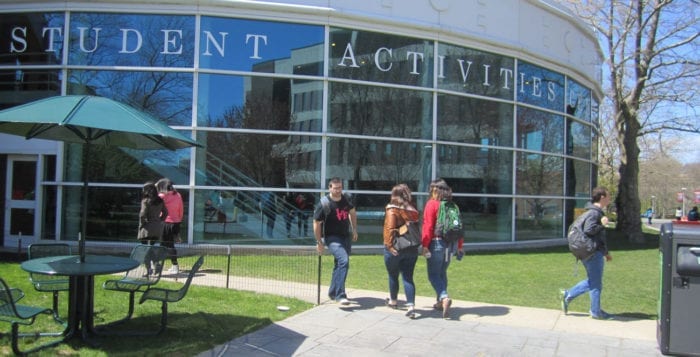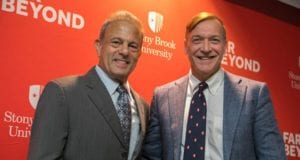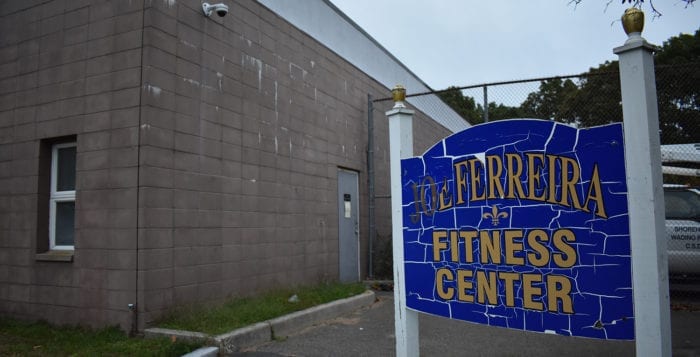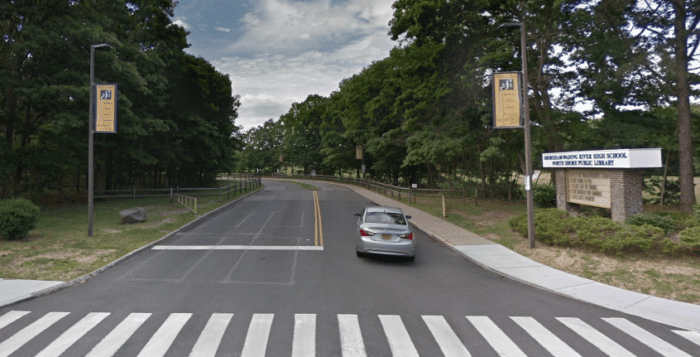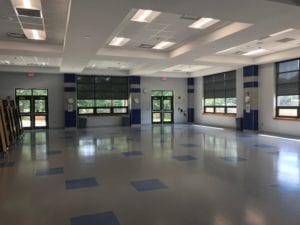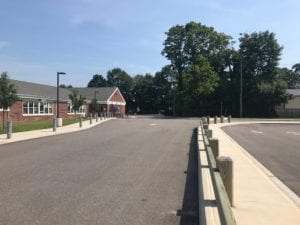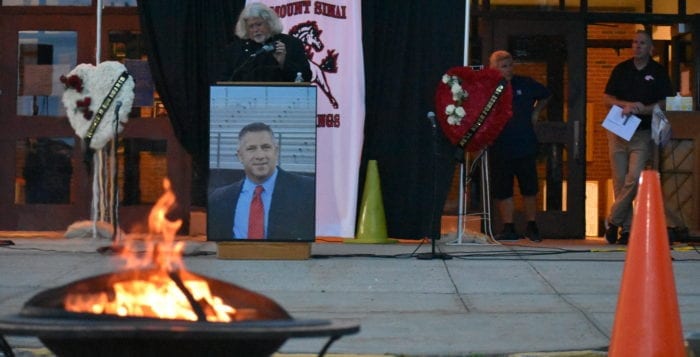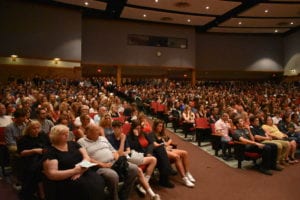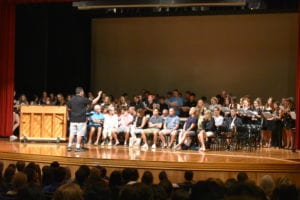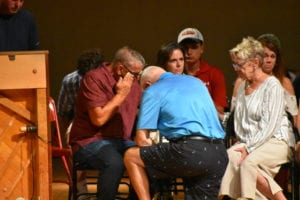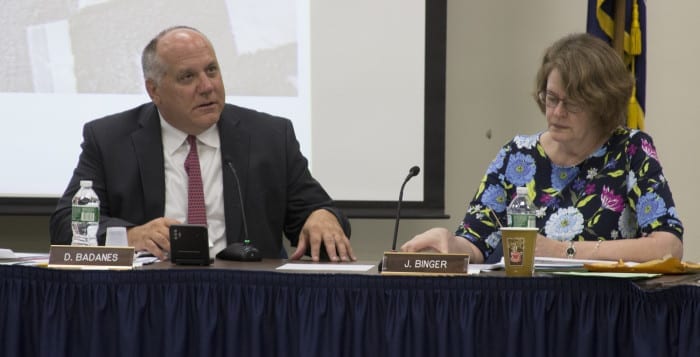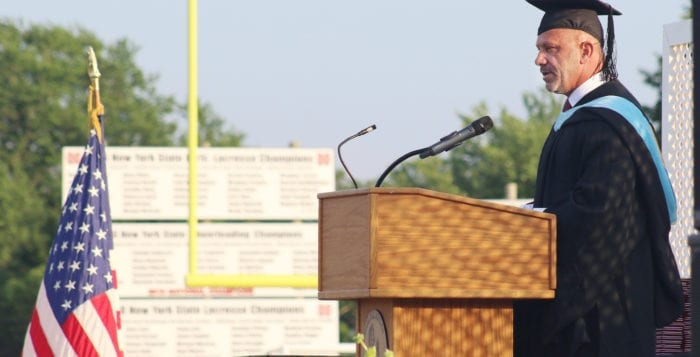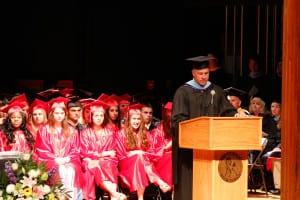With the start of the school year less than a month away, school officials and parents are in the midst of adjusting to stricter state immunization requirements for children that will eliminate exemption from vaccines due to religious beliefs.
The new measure, which took effect immediately after Gov. Andrew Cuomo (D) signed it into law June 13, comes in the wake of numerous measles cases throughout the country including cases in Brooklyn and Rockland County. This year, over 1,000 new measles cases have been reported — the highest in 27 years, according to the U.S. Centers for Disease Control and Prevention.
“We are responsible for implementing the new state immunization regulations exactly as they are written.”
— Marianne Cartisano
New York joins four other states — California, Maine, Mississippi and West Virginia — in eliminating the religious exemption.
While school districts have been notifying parents and guardians about the new requirements through posts on their websites and letters sent in the mail, the new law remains to be a divisive topic.
Advocates of the religious exemption say that eliminating it violates their freedom of religion rights.
South Setauket and Setauket parents Dayna Whaley and Trisha Vasquez, respectively, both ardent anti-vaccine advocates, both said they had a religious exemption for their children but they and others are now considering home-schooling or even moving out of the state.
“God made us in his image and didn’t make us with an incomplete immune system that needed to be injected with toxic chemicals in order to keep us healthy,” said Vasquez, 50. She added she does not subscribe to any one religion but still believes in God. She has a 9-year-old child in the Three Village Central School District.
Whaley, 41, of the Jewish faith, said the options are very limited for her daughter, Grayson, who will be entering kindergarten.
“With religious exemption eliminated, what other things can I look at that maybe could get my child [back] into school,” she said.
In mid-June, the Three Village school district sent out a letter to parents/guardians alerting them of the new legislation signed by the governor. It advised them that every student entering or attending public school must be immunized against poliomyelitis, mumps, measles, Haemophilus influenzae type b, pneumococcal disease and meningococcal disease.
Other school districts have also had to quickly deal with the law over the summer. Marianne Cartisano, superintendent of the Miller Place School District, said the number of exemptions in the district was estimated at 60 students, but the number has been reduced over the past several weeks.
“Miller Place School District remains committed to ensuring a safe school environment for all of our students, while understanding parents have the right to choose if and when they immunize their children,” the superintendent said in an email. “We are responsible for implementing the new state immunization regulations exactly as they are written.”
“You look at the plastic bag ban — you have until 2020 to adjust to that, but our children are thrown out of school immediately and we are scrambling to figure out what to do here.”
— Dayna Whaley
The Miller Place super added the district has no option but to comply.
“We have no authority to deviate from these regulations and must adhere to the guidance provided to our district from the Department of Health and or Office of Children and Family Services,” she said. “During this time of potential transition, we look forward to supporting students and families throughout the vaccination and enrollment processes.”
The New York law requires that parents and guardians provide proof of their child’s immunization within 14 days after the first day of school. Also, within 30 days of the first day of school, parents or guardians must show that they scheduled appointments for follow-up doses for their children.
Some required immunizations include those against diphtheria, tetanus, pertussis (whooping cough), measles, mumps, rubella and varicella (chicken pox).
Until June 30, 2020, a child can attend school if they receive the first age-appropriate dose in each immunization series within 14 days from the first day of school attendance and can show within 30 days that they have scheduled age-appropriate appointments for required follow-up doses, according to NYS Department of Health officials. By June 30, 2020, all students attending school should be fully up-to-date with their required immunizations.
One option Whaley and others have looked at is seeking a medical exemption from state, but she said it is extremely difficult to obtain one as an individual has to fit a certain medical profile.
“Even if we wanted a medical exemption, try finding a doctor that will write one for you or even allow you in their practice,” the South Setauket resident said.
Anti-vaccine proponents are a small but growing group of advocates who argue against vaccination. The group often relies on scientifically disputed pieces of information. The vast majority of the scientific and medical communities have rejected their arguments.
Beyond the scientific arguments, the Setauket parents took issue with the law going into effect immediately.
“You look at the plastic bag ban — you have until 2020 to adjust to that, but our children are thrown out of school immediately and we are scrambling to figure out what to do here,” Whaley said.
Both parents say they are weighing potential co-op and home-schooling options for their children. They said moving would introduce its own host of difficulties.
Dr. Sharon Nachman, division chief of Pediatric Infectious Diseases at Stony Brook Children’s Hospital, said she is glad to have this level of protection for all children in Suffolk County.
“Just as seat belts protect all kids, even those that don’t like them or feel they are too confining, vaccines will now protect all of our children,” the division chief said. “There is abundant data that shows that when we vaccinate all kids, we not only protect them, but also their parents and grandparents. The vaccine law is not specific to measles and includes all vaccines appropriate for school-aged children.”
“Just as seat belts protect all kids, even those that don’t like them or feel they are too confining, vaccines will now protect all of our children.”
— Sharon Nachman
According to a report by the New York Health Foundation, 26,217 students statewide, had religious exemptions from vaccinations during the 2017-18 school year.
Nachman said with the implementation of the new requirements, she and her colleagues have seen an increase in both questions about vaccinations, about the numbers of children who are getting their initial vaccines as well as those who are getting up to date with their vaccines.
“Community protection is a real event,” Nachman said. “As we have seen with the recent measles outbreaks, the only way to combat these outbreaks is by protecting all the children in our community.”
Nachman said the Pediatric Infectious Diseases division at Stony Brook often discusses the scientific data with families who have questions, but those who come in with their minds made up about the risks and benefits of vaccines, especially those who are against them, will rarely agree with the need to vaccinate.



